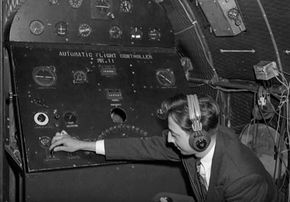In 1931, American aviator Wiley Post flew his single-engine Lockheed Vega -- the "Winnie Mae" -- around the world in a record eight days, 15 hours and 51 minutes. Post had a navigator by the name of Harold Gatty to help him stay alert and fight fatigue on that historic flight. But when Post became the first person to fly solo around the world in 1933, he had to do everything without an extra pair of hands. The secret to his success, or at least one of his secrets, was a simple autopilot that steered the plane while he rested.
Airplane Image Gallery
Today, autopilots are sophisticated systems that perform the same duties as a highly trained pilot. In fact, for some in-flight routines and procedures, autopilots are even better than a pair of human hands. They don't just make flights smoother -- they make them safer and more efficient.
Advertisement
In this article, we'll look at how autopilots work by examining their main components, how they work together -- and what happens if they fail.
